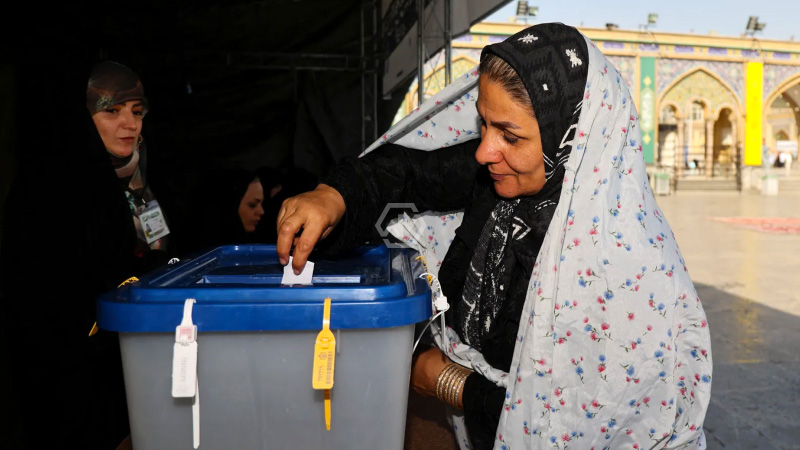- Masoud Pezeshkian leads with 10.4 million votes, followed by Saeed Jalili with 9.5 million.
- Record low turnout of 40 percent reported in the election.
- The Guardian Council allowed only six out of 80 candidates to run, disqualifying most moderate or reformist candidates.
Iran’s 2024 presidential election is set for a run-off after no candidate achieved the required majority. Masoud Pezeshkian leads the race with 10.4 million votes, while Saeed Jalili trails closely with 9.5 million. The total votes counted exceeded 24.5 million, marking a turnout of just 40 percent, the lowest in Iran’s election history.
This low participation rate highlights the public’s growing disillusionment with the country’s political landscape, where economic difficulties and dissatisfaction with both conservative and reformist camps are rampant.
Historic Low Turnout in Iranian Election Sparks Concerns
The Guardian Council, Iran’s top constitutional vetting body, played a critical role in shaping the election. The council, comprising six clerics appointed by Supreme Leader Ayatollah Ali Khamenei and six legal experts selected by the judiciary head, approved only six candidates out of 80 aspirants. This exclusion of most moderate or reformist candidates resulted in a predominantly conservative race. Zeina Khodr from Tehran reported that the low voter turnout reflects deep societal divisions and economic frustrations, raising questions about future voting patterns in the run-off.
The Guardian Council’s stringent candidate selection process contributed to the narrow political field. By disqualifying most moderate and reformist candidates, the council ensured a conservative-dominated race. The council’s composition includes six clerics excelling in Islamic jurisprudence, directly appointed by the Supreme Leader, and six legal experts chosen by the judiciary head. This structure has consistently favored conservative factions in recent elections, leading to widespread voter apathy and disenchantment.
Economic hardships have further fueled public frustration, as many Iranians struggle with inflation and unemployment. These conditions have driven many skilled workers, including doctors and nurses, to seek opportunities outside Iran, exacerbating the country’s brain drain. The upcoming run-off will test whether these issues will motivate higher voter participation.
The societal divisions highlighted by this election are profound, reflecting a broader crisis of confidence in Iran’s political system. The conservative dominance, reinforced by the Guardian Council’s selection process, has failed to address the economic and social grievances of the populace. As Iran prepares for the run-off election, the challenge remains to engage a disillusioned electorate.
The run-off election in Iran will be a critical moment for the country’s future, testing whether voter disillusionment can be overcome and whether either candidate can address the deep-rooted economic and social issues facing the nation.
“The low voter turnout reflects deep societal divisions and widespread disillusionment with both conservative and reformist camps.”
– Zeina Khodr, reporting from Tehran.



